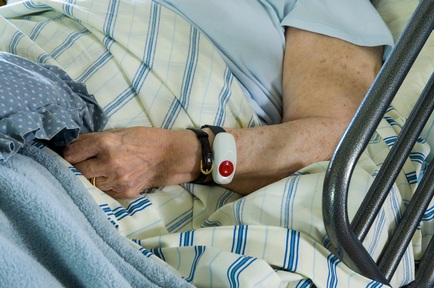Scientists 'one step closer' to finding cure for Parkinson's disease
Scientists have discovered what could potentially cause Parkinson’s disease at cellular level.

Researchers at the University of Leicester have discovered the area of the cell responsible for correctly assembling certain proteins – the endoplasmic reticulum (ER) – may play a much more significant role in Parkinson's than previously thought.
Dr Miguel Martins, lead researcher of the study which was published in the Journal of Cell Death and Disease, said: “This research challenges the current held belief that Parkinson's disease is a result of malfunctioning mitochondria.
“By identifying and preventing ER stress in a model of the disease it was possible for us to prevent neurodegeneration.
“Lab experiments, like this, allow us to see what effect ER stress has on Parkinson's disease.
“While the finding so far only applies to fruit flies, we believe further research could find that a similar intervention in people might help treat certain forms of Parkinson's.”
Parkinson's is a progressive neurological condition which affects around 127,000 people in the UK.
People with Parkinson's do not have enough dopamine because specific nerve cells inside their brain have died. Without dopamine people can find that their movements become slower which can make everyday activities, such as eating or getting dressed difficult or frustrating.
The three main symptoms of Parkinson's disease are tremor, muscle stiffness and slowness of movement.
As well as the symptoms that affect movement, people with Parkinson's can find that other issues, such as tiredness, pain, depression and constipation, can have an impact on their day-to-day lives.
Brain cells work like a complex manufacturing unit. They use energy to build new proteins and recycle proteins that get damaged.
Researchers have found that a number of steps in this manufacturing line are affected in Parkinson's – with the cell batteries, protein production and waste disposal being amongst the functions that go wrong.
The team studied fly models of Parkinson's to better understand the role of two genes that are involved in keeping mitochondria – the batteries of the cell – healthy.
They found that changes in these genes caused malfunctioning mitochondria to tether themselves to the protein folding centre, causing stress to the ER. This led to the death of brain cells in Parkinson's.
If scientists prevented broken mitochondria from attaching to the ER they could stop cells being lost, and prevent symptoms developing. The team suggest that problems with the ER, rather than the mitochondria, may be a central cause of cell loss in some types of Parkinson's.
Researchers believe further research could find that a similar intervention might help treat certain forms of the disease.
Claire Bale, head of research communications and engagement at Parkinson's UK, commented: “Parkinson's occurs due to a loss of dopamine-producing nerve cells in the brain. The symptoms of Parkinson's emerge when around 70 per cent of cells have been lost.
“This research provides new insights into the significance of the role of the endoplasmic reticulum (ER) and the potential order of events that happens when a brain cell starts to malfunction and die.
“Identifying a way to prevent losing precious dopamine-producing cells in a fly model could translate to new and better treatments for Parkinson's.
“This would have the potential to slow or stop the condition in its tracks, which no treatment for Parkinson's can currently do.”
There is currently no cure for Parkinson's, but there are a range of treatments to control the symptoms and maintain quality of life, including: medication, deep brain stimulation (DBS) and physical therapies.
For more information visit: http://www.parkinsons.org.uk/
Latest News Analysis
 04-Sep-19
Extra £1.5 billion announced for social care in Chancellor's Spending Review
04-Sep-19
Extra £1.5 billion announced for social care in Chancellor's Spending Review
 02-Jul-19
Department of Health forced to rethink care homes' nursing rates after legal challenge
02-Jul-19
Department of Health forced to rethink care homes' nursing rates after legal challenge
 18-Jun-19
Overnight care workers forced to sleep in offices and told 'bring your own bedding'
18-Jun-19
Overnight care workers forced to sleep in offices and told 'bring your own bedding'
 14-Jun-19
Back in the closet: Third of care home staff have had no LGBT+ awareness training
14-Jun-19
Back in the closet: Third of care home staff have had no LGBT+ awareness training
 11-Jun-19
PM candidates on social care: Rory Stewart calls fixing care an 'unfinished revolution'
11-Jun-19
PM candidates on social care: Rory Stewart calls fixing care an 'unfinished revolution'